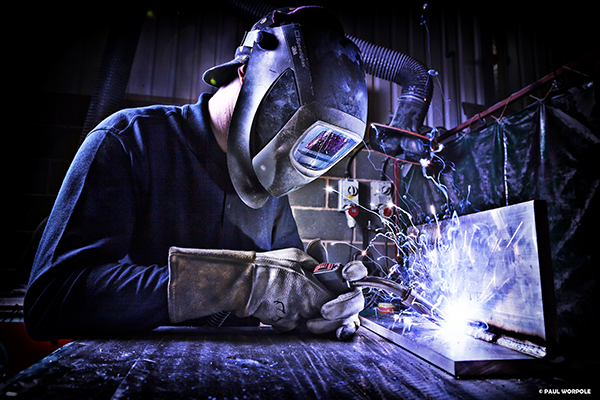
Welding has always been an important trade and those with the skill set recognize they must evolve with the ever-changing market. Advancing technologies are maturing on a global scale and employers understand this. Becoming more familiar with the trade is an excellent way to achieve your professional goals.
Education and Training
Learning how to weld can open a lot of new doors for folks seeking an exciting new career. To make the most gains, finding the right place to get your education, training, and certifications are highly-recommended. Professional trade schools today, like Lincoln Electric, understand the significance of welding as a highly sought after skill set by employers. Especially in the fields of engineering, construction, design, robotics, and mechanics just to name a few.
With the right training and support, welding can provide one with a fulfilling and successful professional career. Take full advantage of getting a comprehensive education where you have the opportunity to become familiar with;
Standard and advanced welding equipment
Welding theory, safety, and procedure
Exposure to unfamiliar and exotic material
Specialized code certification
Robotic automation
In addition to education, professional trade schools offer an excellent support system. A well rounded welding school and certification program will have top-notch training materials, equipment, and the curriculum to get you started. The school can also provide a network of opportunities for exposure to a variety of employers who are seeking knowledgeable and skilled welders.
A Brief History of Welding
There is a long history of welding that stretches back to the Bronze and Iron Age of European civilization. Welding especially became more prominent during the middle ages when blacksmiths took the stage with forge welding. These techniques were used for building solid structures as well as tools and weaponry.
Welding is a fabrication/sculptural process that uses highly concentrated heat to fuse materials together. Metals and thermoplastics are the most commonly used materials for welding and the techniques required differ from simply brazing or soldering metals. Glass is another material that uses welding techniques and is especially used in glassblowing.
The art of welding has come a long way from the days of blacksmiths heating metals and pounding them together until the bonding took place. Today, there are a variety of energy sources that can be used for the welding process. These include a gas flame, a laser, an electric arc or beam, friction, and ultrasound.
Many people don’t realize that the process of welding can be done in many different environments. For instance, it is commonly done in the standard garage/shop in “open-air.” The process is so efficient and powerful that it can be done underwater as well as in outer space.
Welding Solutions Across Industries
There is a long list of industries that require welding solutions. Some of the industries included are:
Automotive and Transportation Industries rely on the latest industry leading welding techniques for durable, reliable automotive parts.
General Fabrication utilizes welding for a variety of creative and maintenance purposes. For example, fixing up machinery and equipment on a job site or the family farm or creating/crafting complicated art pieces for the next art gallery. It’s also commonly used for regular maintenance and repair work.
Heavy Fabrication especially relies on the efficiency of welding. This is because the manufacturing of heavy machinery and equipment requires reliable fabrication.
Offshore drilling companies rely heavily on welding for the construction, maintenance, and repair of offshore rigs, platforms, or subsea fixtures.
Welding also plays a vital role in the construction of pipelines and is used in pipe mills, for power generation, shipbuilding, and structural/construction industries.
Safety Is A Priority
Working around high heat, melting metals, and welding equipment can be dangerous without the proper protective gear. It’s important to note that major burns and injury can result from improper handling of tools and materials. As a precaution, heavy-duty gloves, thick pants, a long-sleeve shirt/jacket, and a welding helmet are a must when using the equipment.
Some of the possible injuries that can be sustained from unsafe welding practices are severe burns, electric shock, damage to one’s vision, inhaling toxic gases or fumes, and possible exposure to ultraviolet radiation. However, with the right learning environment, instructors, and tools this could be avoided.














